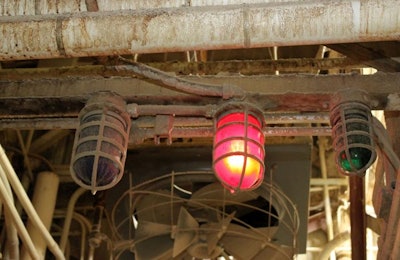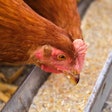
To satisfy Food Safety Modernization Act (FSMA) inspectors, feed mill employees should know and be able to explain the reasoning behind all the steps in an animal feed safety plan, said Cassandra Jones, Ph.D., associate professor at Kansas State University, in an interview after her presentation at the Feed and Pet Food Joint Conference, on September 19 in St. Louis.
Jones has observed a recurring problem when she helps feed mill facilities preparing for FSMA inspections. While feed mill workers may know the physical steps of a food safety plan, they may not have been fully trained on the reasoning behind each action.
Many facilities haven’t completely fleshed out the why, she said.
“The individual who is receiving the investigator understands what is in the safety plan, but may not understand why those decisions were made,” Jones said.
FSMA inspector training now emphasizes that inspectors be more conversational and probe for workers’ understanding of preventive controls and other safety measures, she said.
“The inspector can read the safety plan,” Jones said. “They want to know why.”
Establishing the reasoning behind a feed mill food FSMA plan
To help an employee prepare for meeting with FSMA inspectors, collect anything you can use to establish the justification for each part of a food safety plan, said Billie Johnson, Ph.D., director of food safety at Simmons Pet Food.
Ideally, those justifications are based in science or on a particular facility's history as to why a particular type of sampling scheme was adopted, she said. That collection should then be kept as a separate set of documents. A single main document then references those appendices.
"What we do is put that in a separate little appendix over here so that we can reference it quickly," Johnson said.
That main document serves like a table of contents or cheat sheet. A feed mill’s FSMA liaison can then use that smaller cheat sheet to find the appendices quickly.
“The faster that we can provide the specific documentation that's being requested, the better we can organize our documentation, the faster inspections will be, and the more it looks like you're prepared and you've taken food safety seriously,” Jones said.
Red and yellow binders to organize FSMA documents
Jones recommends using a color-coded binder system to keep track of the documents used during FSMA inspections. She uses a red binder for the documents she plans to hand directly to inspectors, while keeping the supporting documents on-hand.
“I have those other documents in a yellow binder, and I don't hand over that yellow binder, but I have all of the other supporting information that I have clearance from above to share upon request,” she said. “So, if there's a question that comes up, I can pull it from my yellow binder, I can find it quickly, I can provide it, and then put it back into my yellow binder.
“I don't necessarily hand that over, but mostly it helps me organize my thoughts,” she said. “I also have in my yellow binder where to find records. I'm always concerned that the people who know where to find records or have access to records aren’t there the day of the inspection. Whether they are electronically maintained, whether they're hard copies, it’s a location or an index of where to find records associated with things that I have been authorized to share with an investigator. So that I can identify where to find them and how they’re collated.”
















